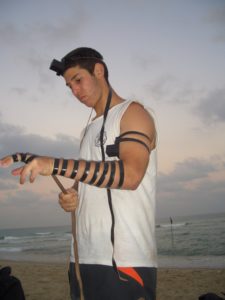Haim Watzman
This is an English translation of my annual dvar Torah for Pesach in memory of my son Niot z”l, whom we lost twelve years ago during Pesach. A pdf file of the Hebrew original, which appears in this week’s issue of “Shabbat Shalom,” the weekly Torah sheet published by Oz Veshalom, the religious peace movement, can be downloaded here .
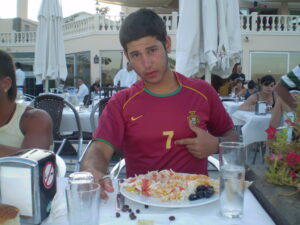
Act One: A prologue that brings the audience into the play and lays the ground for the way the acts that follow will be experienced.
Act Two: The story of the Exodus from Egypt or, more precisely, a set of stories that touch on the way the story of the Exodus is told—the Maggid.
Act Three: The sacred central ritual of eating the Pesach offering, the required festive meal, and the offering of thanks for the meal with Birkat Hamazon, the grace after the meal, and for the redemption with the psalms of the Hallel.
Act Four: The happy ending, a musical finale that raises the spirits and sends the audience out of the theater with a smile and a bounce in their step.
The first act is the most unexpected of the four parts. At first glance it looks technical and dry; it seems not to have much to do with what follows. But, in fact, the opposite is true. It is structured around two motifs that are the very essence of the subsequent acts. Without Act One, the two central acts, those of the story of the Exodus and of the eating of the offering, would be understood in an entirely different way.
 Many years ago, when I worked as a journalist, I attended a press conference at a conservative research institute in Jerusalem. I don’t recall exactly what the subject was, but I do remember that the institute’s director, who had served in an elite unit in the US Army, claimed that he could prove scientifically that the State of Israel had been in the right in a recent military action that had been loudly criticized by the rest of the world. After I and several other reporters settled ourselves in the small meeting room, he rose to speak. “I’ll start with the creation of the world,” he began. Realizing that the press conference would be very long and grueling. I mumbled an excuse of some sort, got up, and left.
Many years ago, when I worked as a journalist, I attended a press conference at a conservative research institute in Jerusalem. I don’t recall exactly what the subject was, but I do remember that the institute’s director, who had served in an elite unit in the US Army, claimed that he could prove scientifically that the State of Israel had been in the right in a recent military action that had been loudly criticized by the rest of the world. After I and several other reporters settled ourselves in the small meeting room, he rose to speak. “I’ll start with the creation of the world,” he began. Realizing that the press conference would be very long and grueling. I mumbled an excuse of some sort, got up, and left.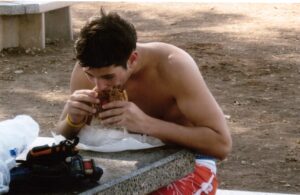 At the beginning of the Seder, before we begin the magid, the telling of the story of the exodus from Egypt, we perform a ritual called yahatz. We break, according to most customs, the middle of the three matzot that we have placed on the table along with the other signs of the holiday. We set the larger piece aside or conceal it so that it will serve after the meal as the afikoman.
At the beginning of the Seder, before we begin the magid, the telling of the story of the exodus from Egypt, we perform a ritual called yahatz. We break, according to most customs, the middle of the three matzot that we have placed on the table along with the other signs of the holiday. We set the larger piece aside or conceal it so that it will serve after the meal as the afikoman.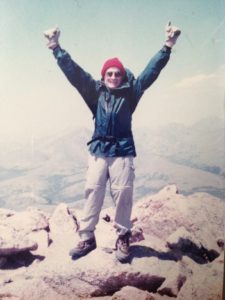 “Alas, she become a harlot, the faithful city” laments the prophet Isaiah (1:21) in the haftarah for Shabbat Hazon, the Shabbat preceding Tisha B’Av. Isaiah is not the only prophet to portray the city of Jerusalem, and the people of Israel, as a harlot—it is a motif that other prophets also use. The most notable of these is Hosea, in whose book it constitutes the underlying metaphor. On the face of it, the comparison seems simple. There are women who are unfaithful to their husbands and who lie with other men, either to satisfy their sexual passions or to earn money. When the people of Israel worship other gods and act in violation of the values of the Torah, they are like harlots.
“Alas, she become a harlot, the faithful city” laments the prophet Isaiah (1:21) in the haftarah for Shabbat Hazon, the Shabbat preceding Tisha B’Av. Isaiah is not the only prophet to portray the city of Jerusalem, and the people of Israel, as a harlot—it is a motif that other prophets also use. The most notable of these is Hosea, in whose book it constitutes the underlying metaphor. On the face of it, the comparison seems simple. There are women who are unfaithful to their husbands and who lie with other men, either to satisfy their sexual passions or to earn money. When the people of Israel worship other gods and act in violation of the values of the Torah, they are like harlots.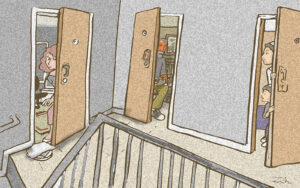
 In memory of my younger son, Niot, eight years after his death at the age of 20, during Pesach. From the Pesach 2019 issue of
In memory of my younger son, Niot, eight years after his death at the age of 20, during Pesach. From the Pesach 2019 issue of  This dvar Torah, translated from this week’s issue of
This dvar Torah, translated from this week’s issue of 
